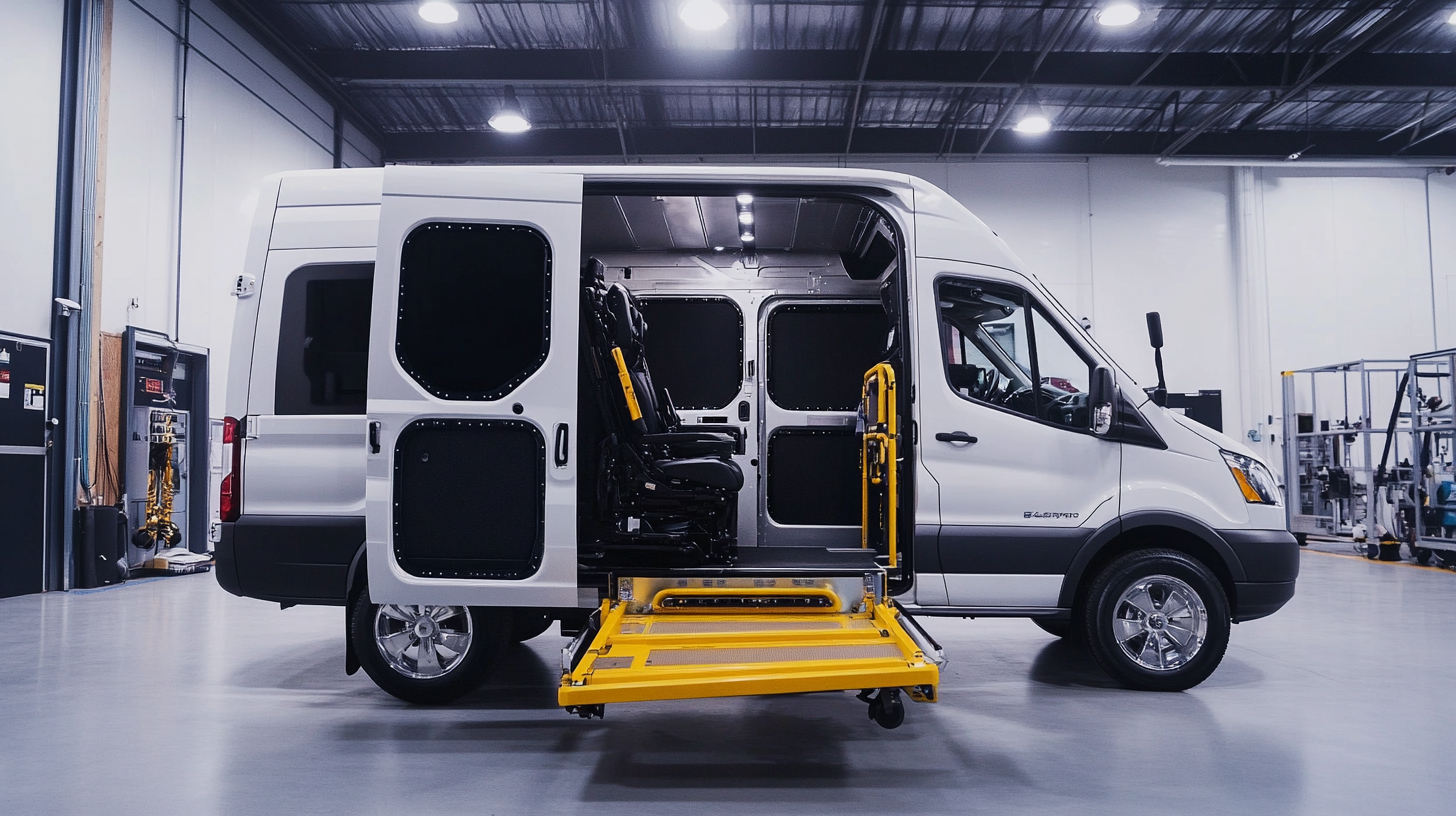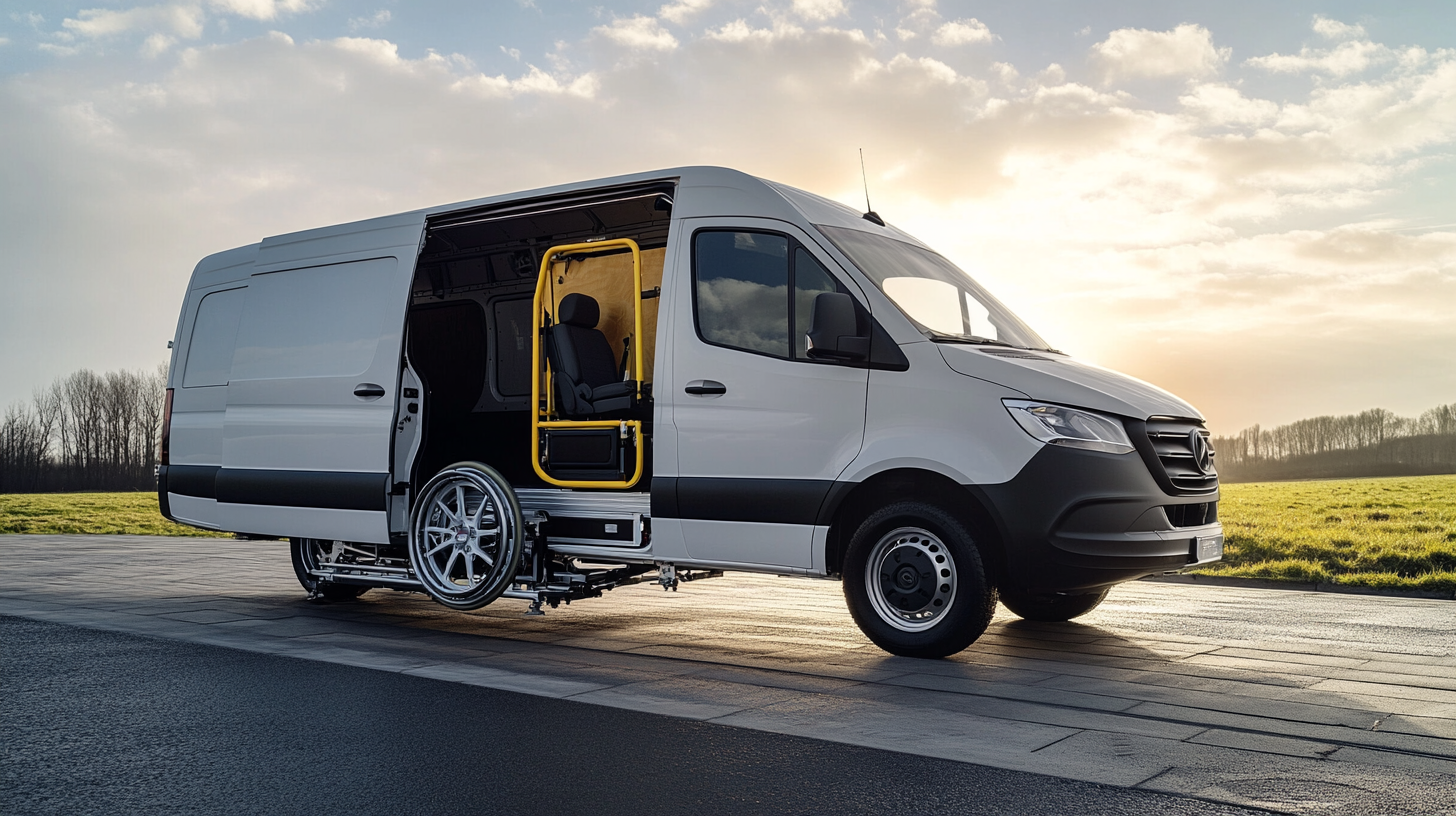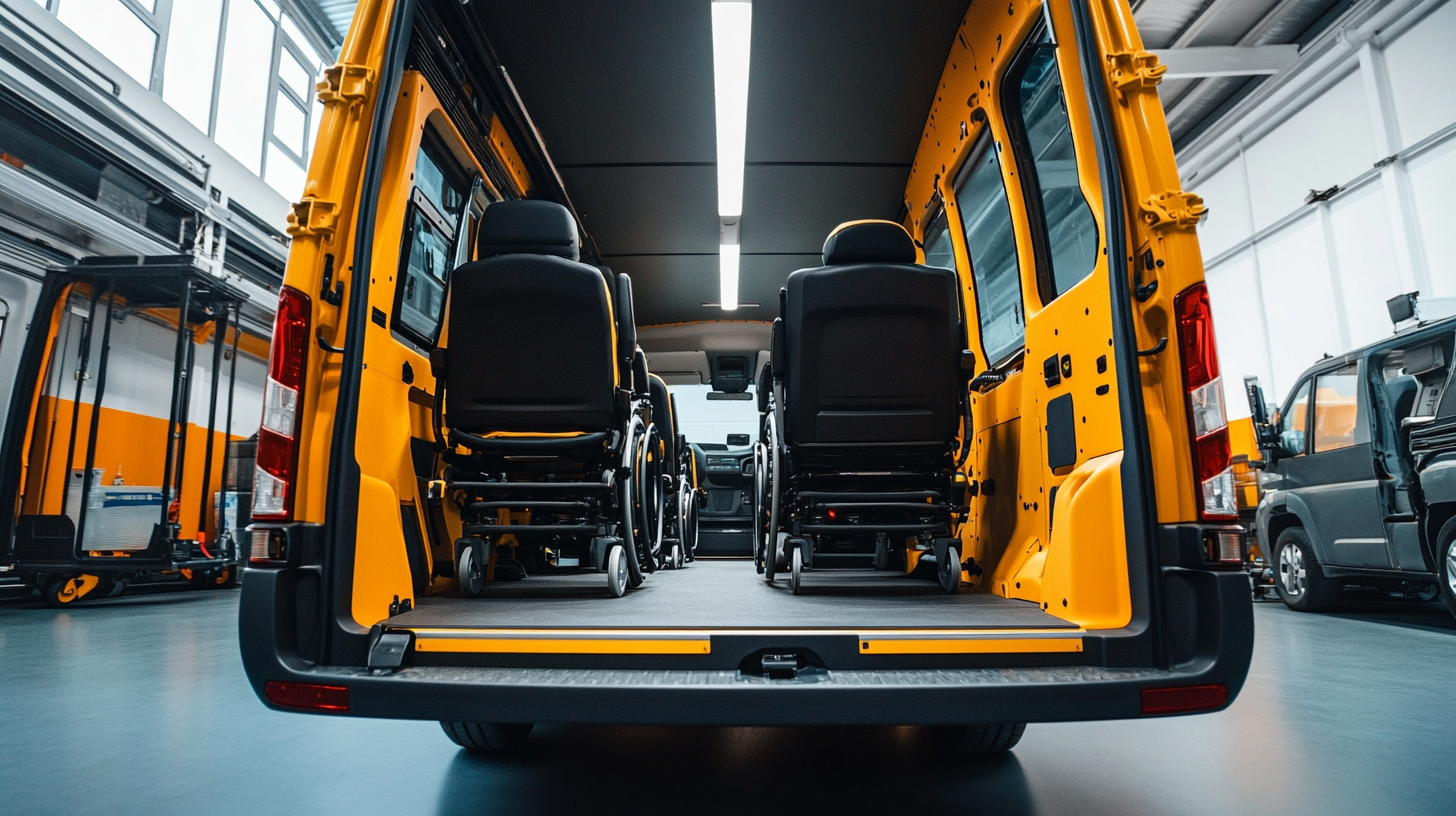Global Manufacturing Standards: How to Choose the Best Wheelchair Accessible Vans for Your Fleet
With the rising demand for inclusive transportation, the greater impetus must be on implementing global manufacturing standards in the manufacture of wheelchair-accessible vans. An ISO report states that by 2026 the $27.5 billion global market for adaptive vehicles, encompassing wheelchair-accessible vans, would be the subject of a 6.9% compound annual growth rate. The increase in awareness regarding the rights of persons with disabilities and the growing demand for accessible transportation options within urban setups are the main factors driving these changes.
Choosing the right type of wheelchair-accessible van for your fleet is important for compliance but will also make your customers happy and do wonders for operational efficiency. About 7.3 million Americans use some form of wheelchair or scooter, according to the National Federation of the Blind. These statistics make it clear that manufacturers have to maintain high quality. Respecting international manufacturing standards will give fleet operators the confidence that their vehicles are safe, durable, and activity-specific for users, thus bringing them closer to an inclusive society.

Understanding Global Manufacturing Standards for Wheelchair Accessible Vans
Wheelchair Van Manufacturing Standards are very important in ensuring that your fleet is equipped with proper vehicles. As much as these standards consider the safety and comfort of passengers, they also seek to harmonize production in different regions. Once again, the importance of these standards has been highlighted in current news with China expected to warmly host athletes during the upcoming winter Paralympic Games. Accessibility and Inclusivity appeal throughout the nation and are affecting many sectors including transportation.
Since the global market for disability vehicles is projected to rise to $1.76 billion by 2033 at a projected CAGR of 6.25% for the period 2023-2033, the standards would allow these manufacturers to remain competitive in the market. Therefore, this market trend fully supports the justification of investment in wheelchair-accessible vans that meet these standards; they go a long way in ensuring the quality of service extended to passengers.
The media have also poured coverage on the plight of wheelchair users, such as how personal tools to modify public transport are a great hindrance in designing accessible vehicles. In prioritizing global manufacturing standards, fleet operators will enhance inclusivity so that everybody, irrespective of mobility challenges, can travel comfortably and safely.

Key Features to Consider When Selecting Accessible Vans for Your Fleet
When it comes to finding handicap vans convenient enough for your fleet of vehicles, you have to keep some priorities in your mind. First is the type of accessibility technology that is present with the van. Some will offer you both ramp and lift functionalities, which can offer a wider range of applications for passengers being transported. It is then important to check whether these features are easy to operate, stow, and retrieve as this will affect loading or unloading safety and efficiency.
Space inside the vehicle also counts. Ample evacuation area should be part of the build as a good maneuvering allowance, making it easy for the wheelchair passengers in and out of the vehicle. It is best to consider models that can accommodate almost all types of wheelchairs and mobility devices. It is generally assessed whether safety mechanisms such as secure tie-downs and seating arrangements are available and easy to use.
Think about the entire accessibility of the vehicle by drivers and passengers as well. Adjustable driver seats, low floor levels, and user-friendly controls have changed the total experience of these people. Considering all these elements would ensure that the fleet of wheelchair accessible vans does not only remain compliant but also provides comfort and safe traveling for all.

Evaluating Safety and Compliance in Wheelchair Accessible Vehicles
Although very good wheelchair accessible vans assure safety and compliance for your fleet, they mean compliance when it comes to transporting individuals who cannot walk. Mobility impairs place such individuals into specific manufacturer standards to come screening safe travel, beyond which there is proper evaluation of WAVs. Compliance deadlines refer to aspects like securement systems, ramp definition, and the necessary strength to uphold the vehicle.
Modern safety developments in vehicles often constitute good reference material. For instance, the Tank 300's recently introduced 18-inch all-terrain tires illustrate how improved features in any vehicle could bring greater safety and better performance. WAVs are found to benefit greatly from similar developments, where the quality and adherence of tires largely determine performance and safety levels. Fleet operators need to ensure that these are the kind of vehicles you dream to see in your fleet-these are mainly the types that unfortunately fulfill the most meager compliance parameters.
However, real-world testing of wheelchair accessible vans is crucial. Operator feedback and performance evaluations of these vehicles ensure they meet the expected safety and compliance benchmarks. Therefore, proper assessments and keeping up to date with the latest accessory and safety technology developments will go a long way in maintaining a high-standard fleet that can cater to the needs of passengers with disabilities.

Cost-Effectiveness and Longevity: Investing in the Right Vans
Cost-effective and durable wheelchair accessible vans should be on your list of considerations when investing in a fleet. The best vans not only satisfy the international standard of manufacturing but also increase the service level of delivery for persons with mobility challenges. Research indicates that one dollar saved for every person per year on investments in low- and middle- income countries can save millions of lives. This phenomenon of strategic investment applies also in vehicle selection: one-time costs could, however, yield more savings and enhancements on the safety angle down the road.
Durability contributes to the overall values of the van as well. Investing in high-quality wheelchair accessible vans which are strong and reliable reduces maintenance costs and reduces the number of times they are replaced, thus ensuring organizations can spend their funds wisely. Employers and service providers should be keen on long-term benefits before acquiring a new purchase, opting for vehicles that would bear the rigors of daily use and offer a safe and comfortable journey for the passenger.
Making informed choices when it comes to the acquisition of accessible vans could also contribute to wider public health goals by reducing healthcare costs related to transport injuries. In sum, it can create cost-effective as well as long-term dividends to the organization while promoting dignity and equality in mobility services.
Best Practices for Integrating Accessible Vans into Your Transportation Services
The presence of wheelchair vans in the transportation services is not just a matter of compliance but an enhancement of accessibility and dignity for all passengers. To integrate these vehicles into your fleet effectively, begin with an understanding of the diversity of your client's needs. Conduct surveys or focus groups of potential users so that you get insight into their unique requirements. An early start will ensure that the vans you choose accommodate a variety of mobility devices with comfort and safety as prime considerations.
Understanding user requirements must be supported by a program of staff training concentrating on sensitivity to and appropriate handling of passengers with disabilities. Reskilling workshops must emphasize the operational aspects of accessible vehicles and customer service excellence to complement the training program. Drivers also need to be trained in how to safely and respectfully assist passengers, which will build confidence in them to use your services more often.
Besides, it’s good to have local disability organizations involved in the outreach. Such organizations will provide constructive comments on your services while assisting in the promotion of your accessible transportation options in their community. Working alongside these organizations can create an environment that supports not merely the letter of the law but the spirit of going beyond to fulfill the needs of physically challenged individuals, eventually laying the ground for a public transport structure that is inclusive.